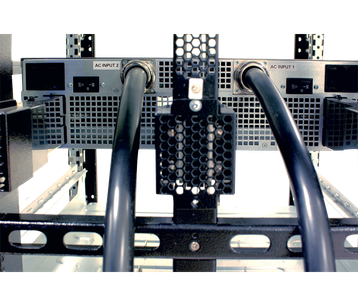Iused to think that 20 percent of what I thought was useful one year would be obsolete the next. I’ve just been to the Open Compute Project US Summit 2016, and I think I may have to shift my estimate to nearer 80 percent when it comes to OCP gear.
In one year, since the 2015 Summit, the open-source hardware magicians have shrunk product development times drastically compared with the big brand vendors. The OCP community has also made products that will disrupt the data center industry this decade. Here are some highlights:
Removal of AC-DC power supply units, or PSUs
Conventional servers come with at least two AC-DC PSUs, each sized to support the total load of the ICT kit. Each PSU is underutilized, and 60 percent of each server’s total capacity is stranded. Blade center servers give better utilization with shared PSUs feeding up to 16 server blades.
The OCP community has scaled this to the complete rack, so each rack has its own AC-DC PSU feeding 12V DC to the servers via a copper busbar.
A traditional enterprise data center with 48 racks, 70 percent occupied by pizza box servers, would have 2,688 PSUs, or 3,000, including network and storage devices. An optimised 48-rack OCP solution would reduce the number of PSUs by 2,900.
Removal of out-of-band management ports
Conventional servers normally have at least one out-of-band management port, which must be cabled and connected to Ethernet switches, which can double the quantity of cabling and Ethernet switch ports in the computer room.
The new OCP servers are networked for out-of-band management via powerline through the DC busbar in the rack and connect to a cheap Raspberry Pi single board computer in each rack running Open DCRE (Data Center Runtime Environment).
In our 48-rack example, we can save 2,600 RJ45-RJ45 patch cords; 26km of Cat5e/6/6A cables; 2,600 RJ45 jacks; and more than 100 RJ45 patch panels, along with 50 24port Ethernet switches.
No centralized UPS
The OCP AC-DC power supplies in each rack are combined with a BBU (Battery Backup Unit) using Li-Ion batteries. This removes the need for the centralized UPSs and Valve Regulated Lead Acid (VRLA) batteries, plus the rooms that these centralized power resources occupy, which reduces the size of the data center by 25 percent. The latest OCP racks are slightly taller to house the distributed PSUs and BBUs, so we don’t require larger computer rooms.
End of intelligent rack-mounted power strips
These innovations make obsolete the use of dual rear-mounted intelligent power strips. For our 48-rack enterprise data center, this saves more than £50,000.
End of multimode cabling and parallel optics
The OCP community announced the new single-mode 100GE duplex LC 500 meter ‘Lite’ optics – a value-engineered version of the existing 10km optics at one-tenth the price. This could reduce the fiber count compared with multimode parallel optics by 75 percent. Enterprise data centers that have gone down the road of multimode parallel optics may find themselves in a very embarrassing position in the next two years, having cabled their data centers with the wrong fiber cables and connectors.
OCP awareness
Join me on my OCP Awareness Course to learn more about how OCP innovations will disrupt enterprise data centers.
John Laban teaches DCPro courses including the OCP Awareness course



